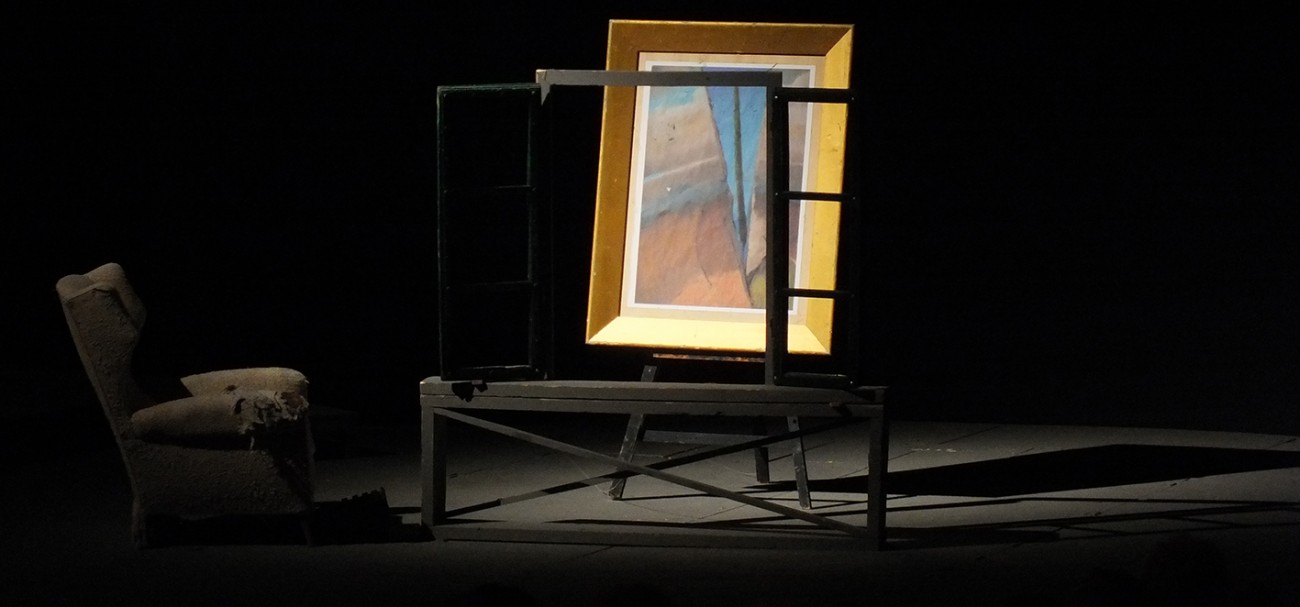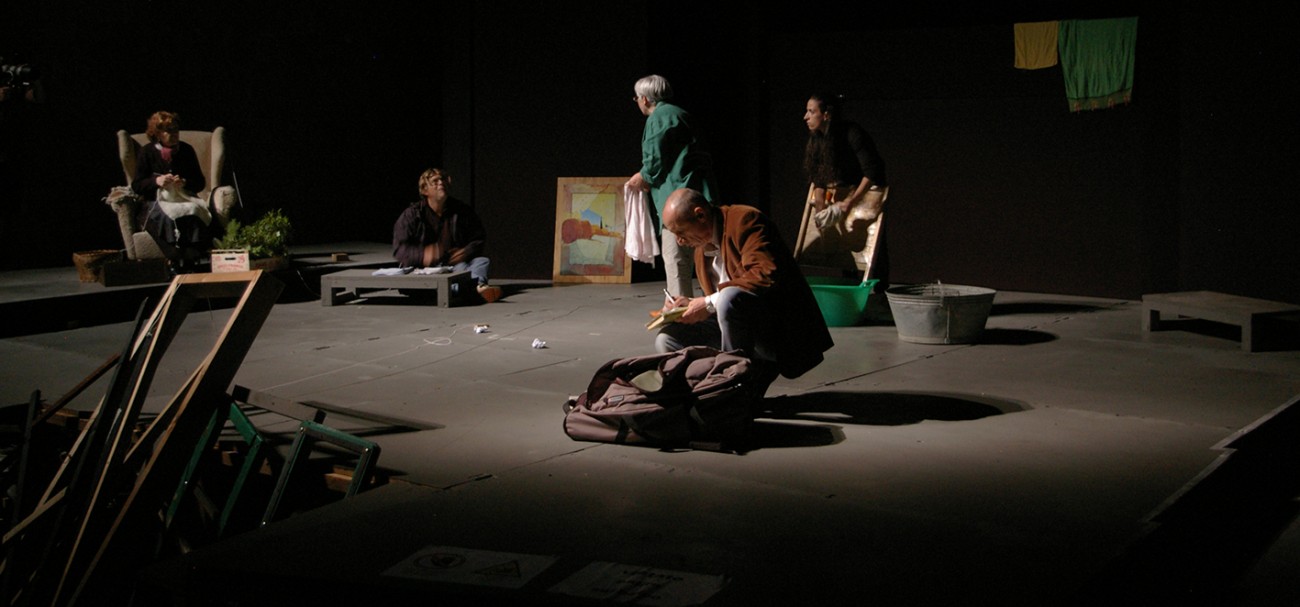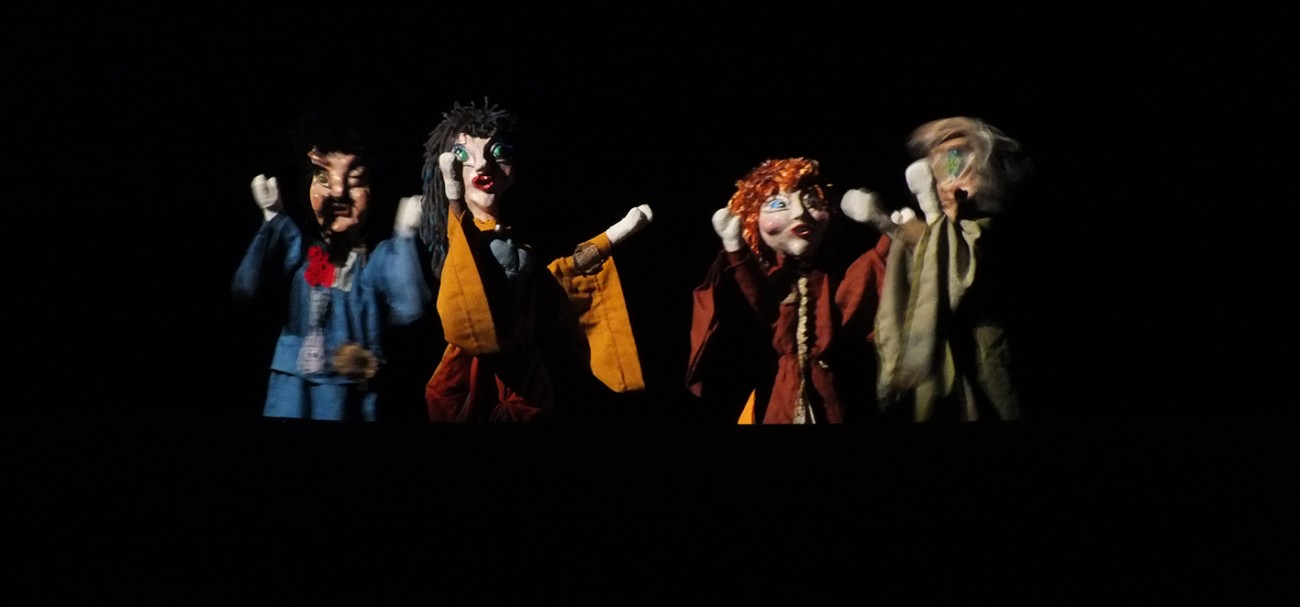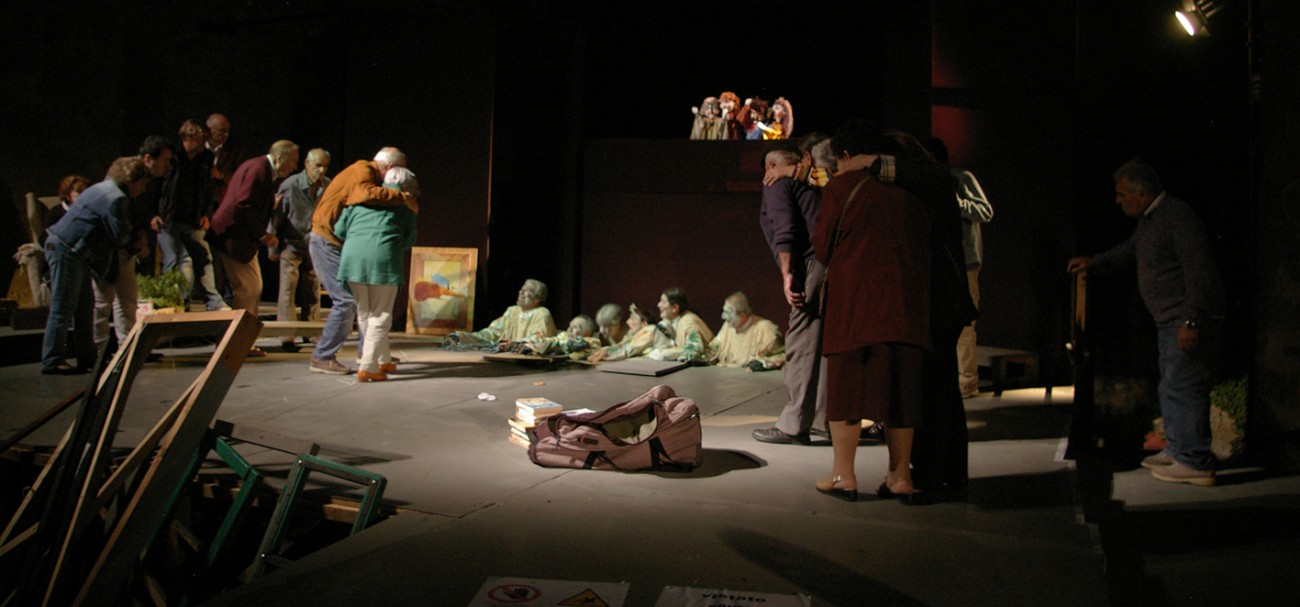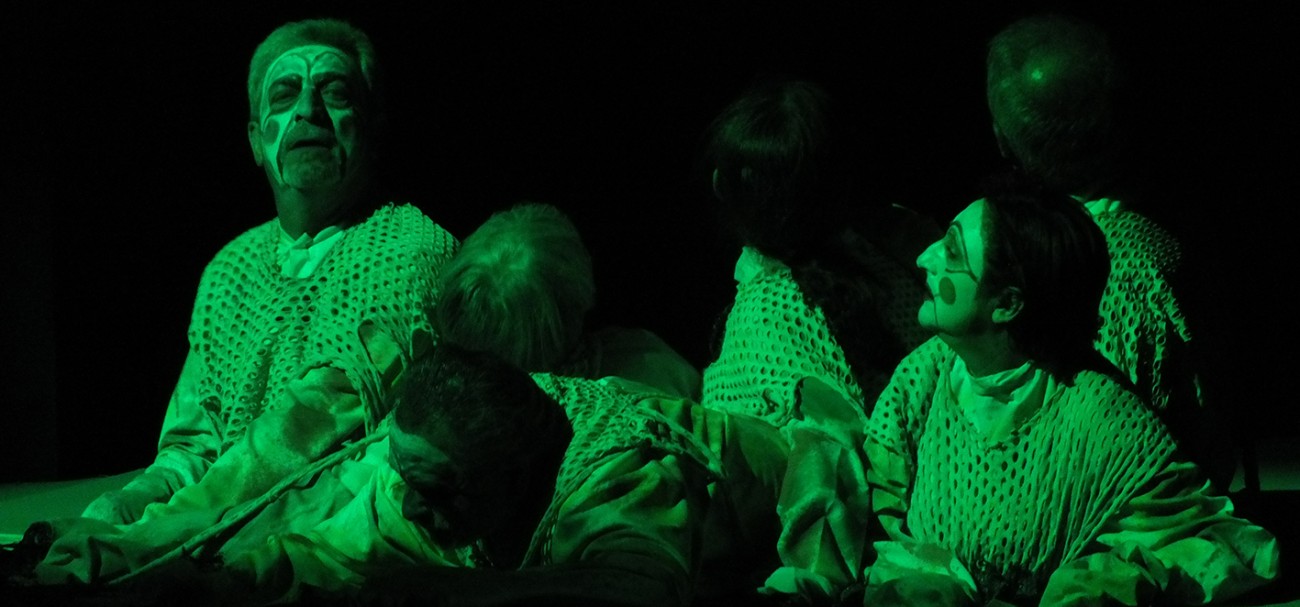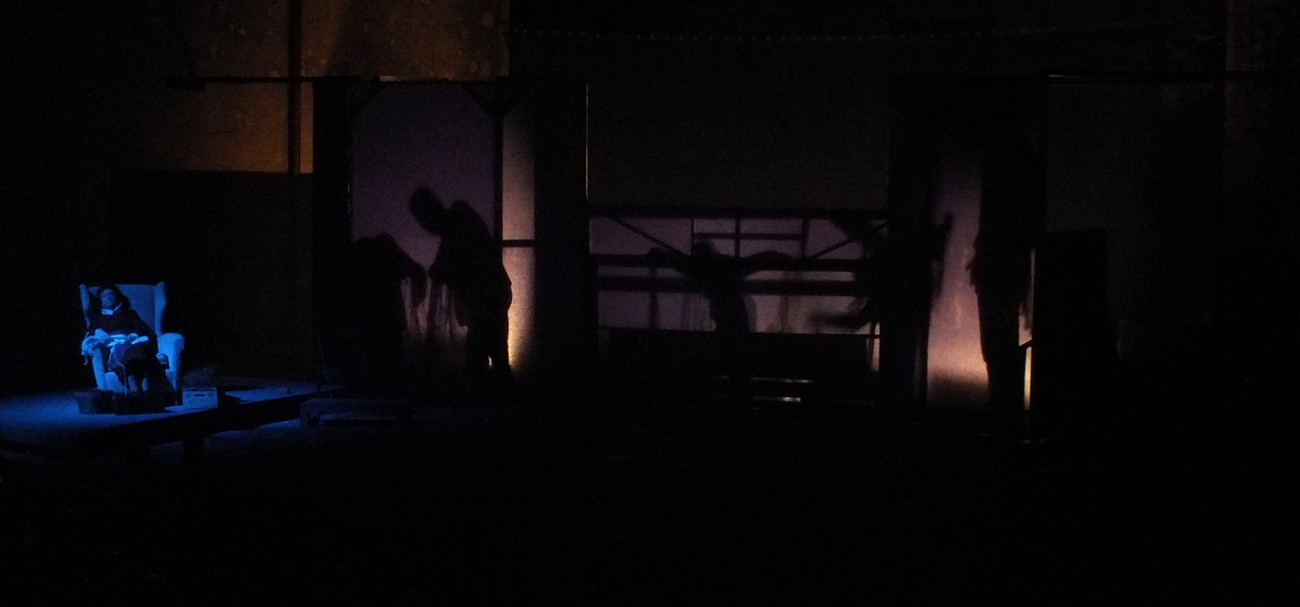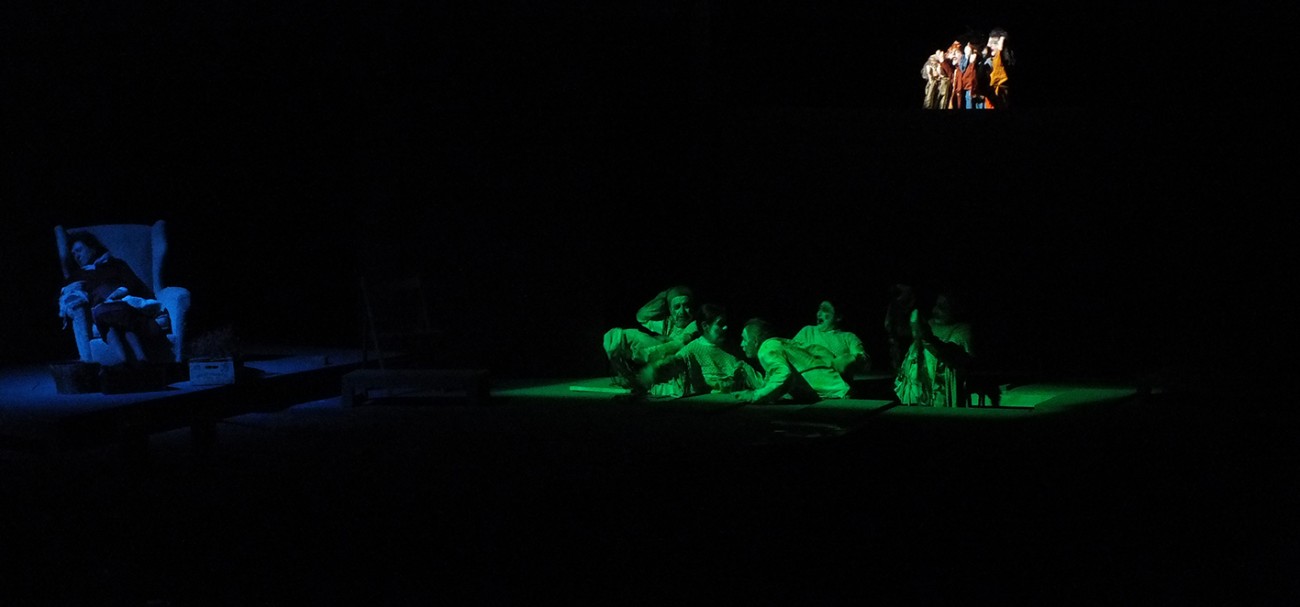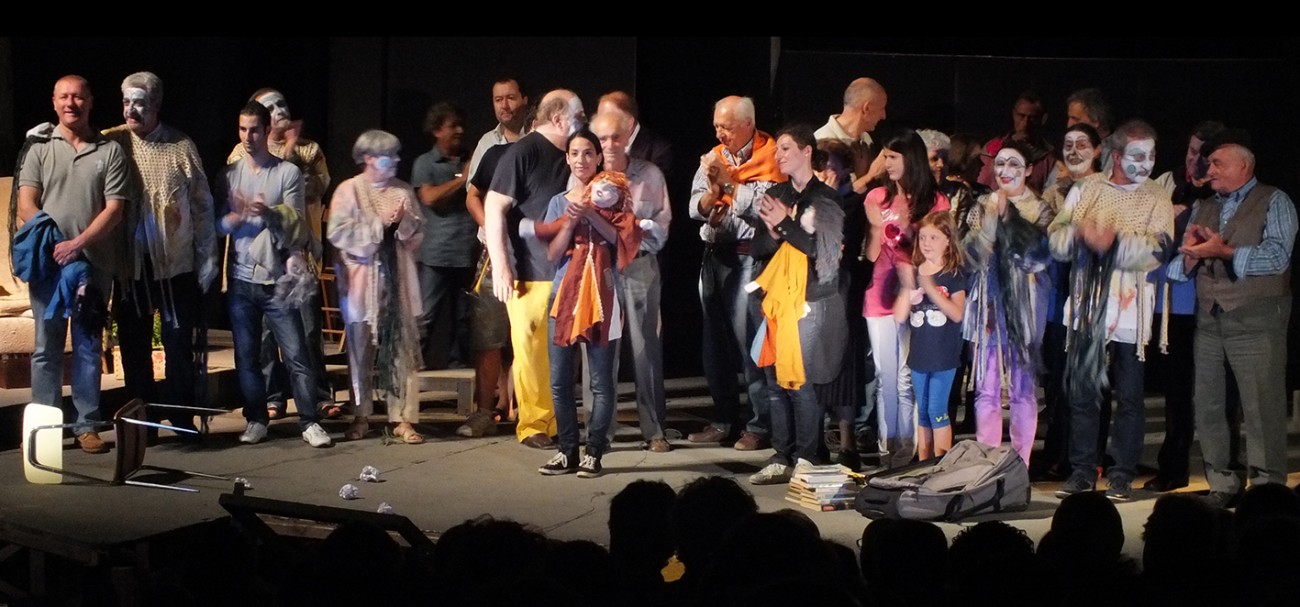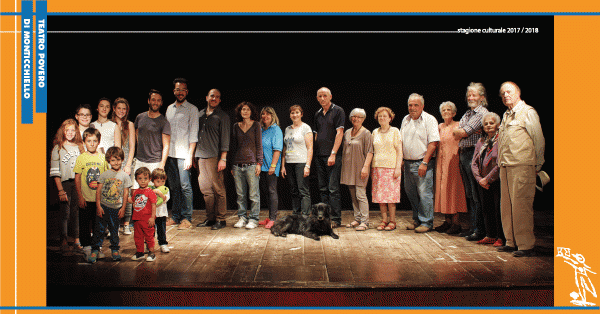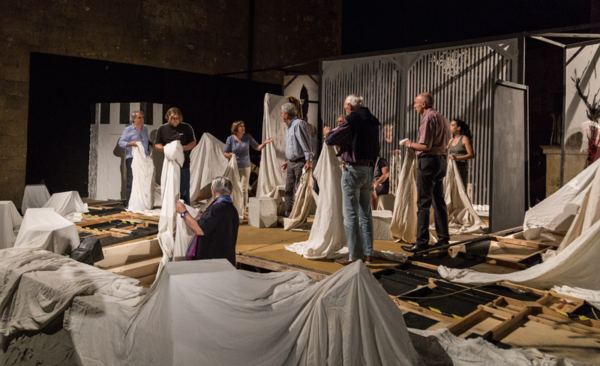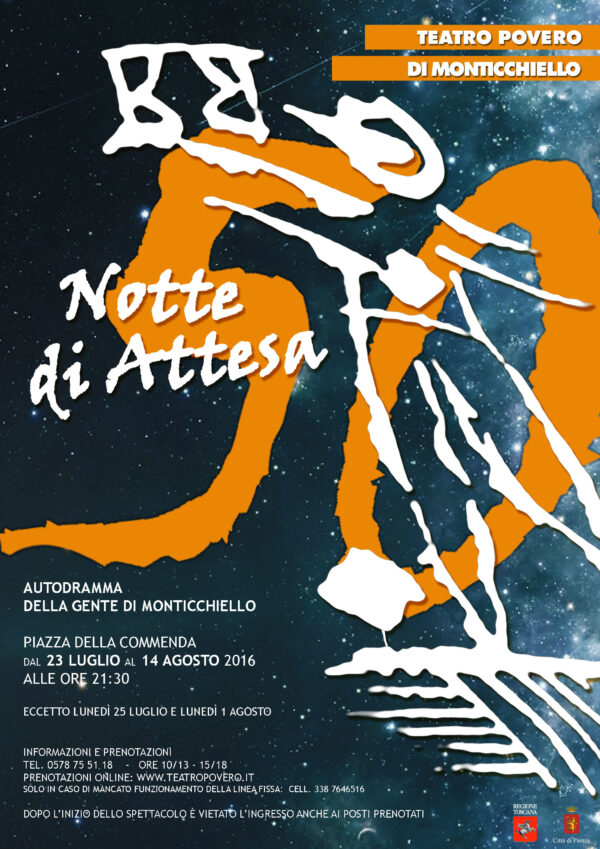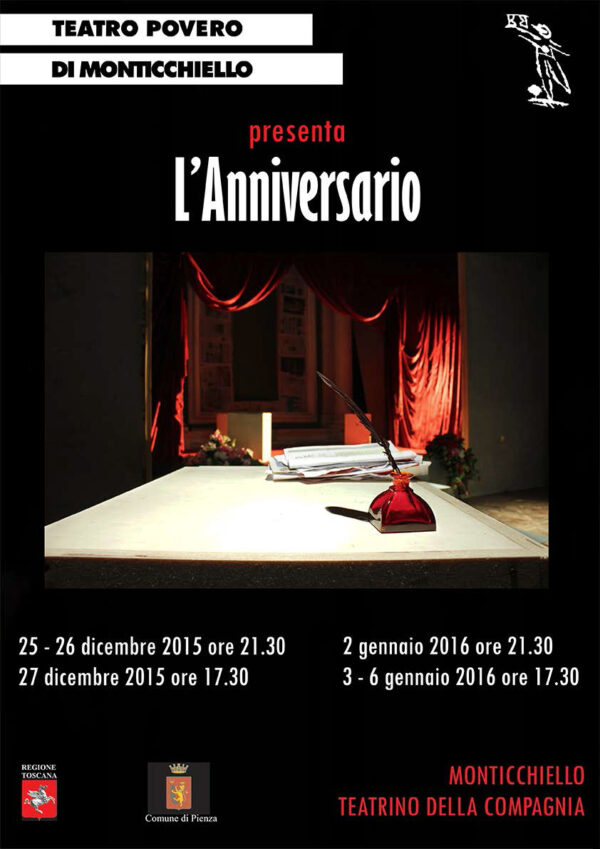The Teatro Povero continued to be concerned with the economic crisis, which was gripping Monticchiello, and Italy generally. One of the key themes this time was a concept of society divided into winners and losers, where the losers have no rights and are exploited by people with power.
A modern village family were shown trying to survive in a state of collapse. (In fact, as well as general financial difficulties, Monticchiello had suffered the literal ‘collapse’ of a part of its medieval ramparts, under unusually heavy rain.) A series of different attitudes were expressed by the family and its neighbours, with disagreement becoming increasingly strong between the older generation who showed a level of apathy, and younger people who showed more resistance. Some youngsters were mounting a puppet show, to entertain the community and to raise a small amount of money: the story which they performed was about a society of winners and losers—fictional, or not? (This was the first time that puppets had appeared on a Monticchiello stage.)
The ‘nightmares’ of the title were in the mind of the old grandmother, who bore a ‘knot in her stomach’ (‘un gomicciolo’—cf.the autodramma entitled Gomiccioli of 2005), a resentment against exploitation of the weak and the poor, which dated from the day in the 1960s when her family was evicted from its home. A group of predatory monsters arose in her dreams and addressed her directly—another version of images used in recent previous autodrammi. The family and the people of Monticchiello eventually woke up to the situation, and buried the monsters.

